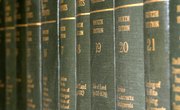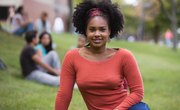College newsletters differ from newspapers in a few significant ways. For starters, newspapers are more focused on news and recent happenings around campus, while newsletters are more focused on informing alumni, students, faculty and parents on academic developments and successes. Although the nature of the content is different, you can still have some similar sections that work to inform your readers in more interesting and intriguing ways.
Student Opinion Polls
Take a poll of student opinion regarding a recent development. Collect statistics through surveys and gather some quotes from students. Interview students about new services offered to them or new campus guidelines. For example, if your college implements a new smoking restriction policy, ask them how they feel about it. If you receive negative feedback, accompany the poll and opinion results with information on reactions by the school's administrators or faculty.
Regular Columns
Have a regular column or two in the newsletter where a student or faculty member expresses his thoughts or feelings on a certain topic highlighted in the newsletter. The writing should be in a conversational tone to engage the readers and make them feel at home with his writing.
Online Versions
Place stories or PDF copies of your newsletter online. This way, you can post the link all over the Internet to make sure as many people see and read the newsletter as possible. It also serves as a clutter-free archive of past stories for the benefit of students, faculty and the newsletter writers.
Calendar of Events
Keep a regular calendar of events in each newsletter you publish. Take submissions from on-campus organizations to keep the student body and alumni aware of ways they can stay connected with the campus. Include time, location, date and where to go for more information.
Related Articles
Writer Bio
Chelsea Baldwin began writing professionally for local newspapers in 2008. She has published articles in “High Country Press” and “Kernersville News.” She also produced newsletters for a local chapter of AIESEC, a global nonprofit organization. She earned a Bachelor of Science degree in journalism from Appalachian State University.










